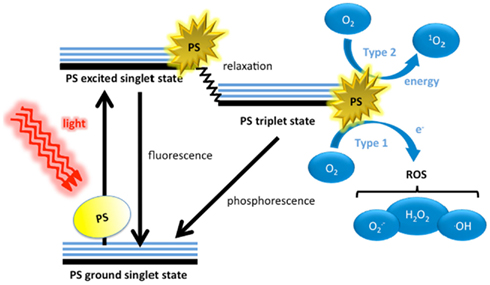Deaths from pancreatic cancer rank fourth among cancer-related deaths in the United States, with almost 50,000 new cases diagnosed each year. Two thirds of pancreatic patients die from metastasis of the cancer, while one third die from the primary tumor. Topoisomerases are enzymes that relieve torsional tension in DNA by cleaving and re-ligating one or both strands, which allows for the continuation of DNA replication. An interruption of this process causes the cell to die. Topoisomerase inhibitors (TPIs), such as Irinotecan, interfere with the action of topoisomerase by restricting the ability of the enzyme to ligate the DNA strands after cleavage and relaxation. A nanoliposomal formulation of Irinotecan has been approved by the FDA in 2015 to treat pancreatic cancer and has been shown to decrease systemic toxicity and increase circulation time in the body, thus promoting tumor accumulation through the enhanced permeability and retention effect. Photodynamic therapy (PDT) induces cell death by the photoirradiation of a photosensitizer (PS), to convert available oxygen to singlet oxygen, a cytotoxic reactive molecular species. A nanoliposomal formulation of the PS benzoporphyrin derivative was approved by the FDA in 2000 for the treatment of age-related macular degeneration, which improves delivery of the PS and retains its photoactivity1. Combining the two nanoliposomal treatment modalities, PDT and chemotherapy, has been demonstrated to synergistically enhance the anti-tumor and anti-metastatic effects of the treatment in pancreatic cancer models2. Furthermore, to achieve cancer cell selectivity and to decrease off-target toxicity of the liposomal combination treatment, we are optimizing the conjugation of a tumor-targeting antibody to the surface of the liposomes. The increased selectivity will allow for the preferential delivery of a chemotherapeutic, such as irinotecan, and a PS such as BPD to the tumor cells. Therefore, the overarching goal is to provide a flexible platform for cancer cell-specific intracellular delivery of synergistic chemotherapeutics and photodynamic agents, with the potential for targeting various tumor cellular components. 1) Huggett MT, Jermyn M, Gillams A, et al. Phase I/II study of verteporfin photodynamic therapy in locally advanced pancreatic cancer. Br J Cancer. 2014;110(7):1698-704 2) Huang HC, Mallidi S, Liu J, et al. Photodynamic therapy synergizes with irinotecan to overcome compensatory mechanisms and improve treatment outcomes in pancreatic cancer. Cancer Res. 2015




